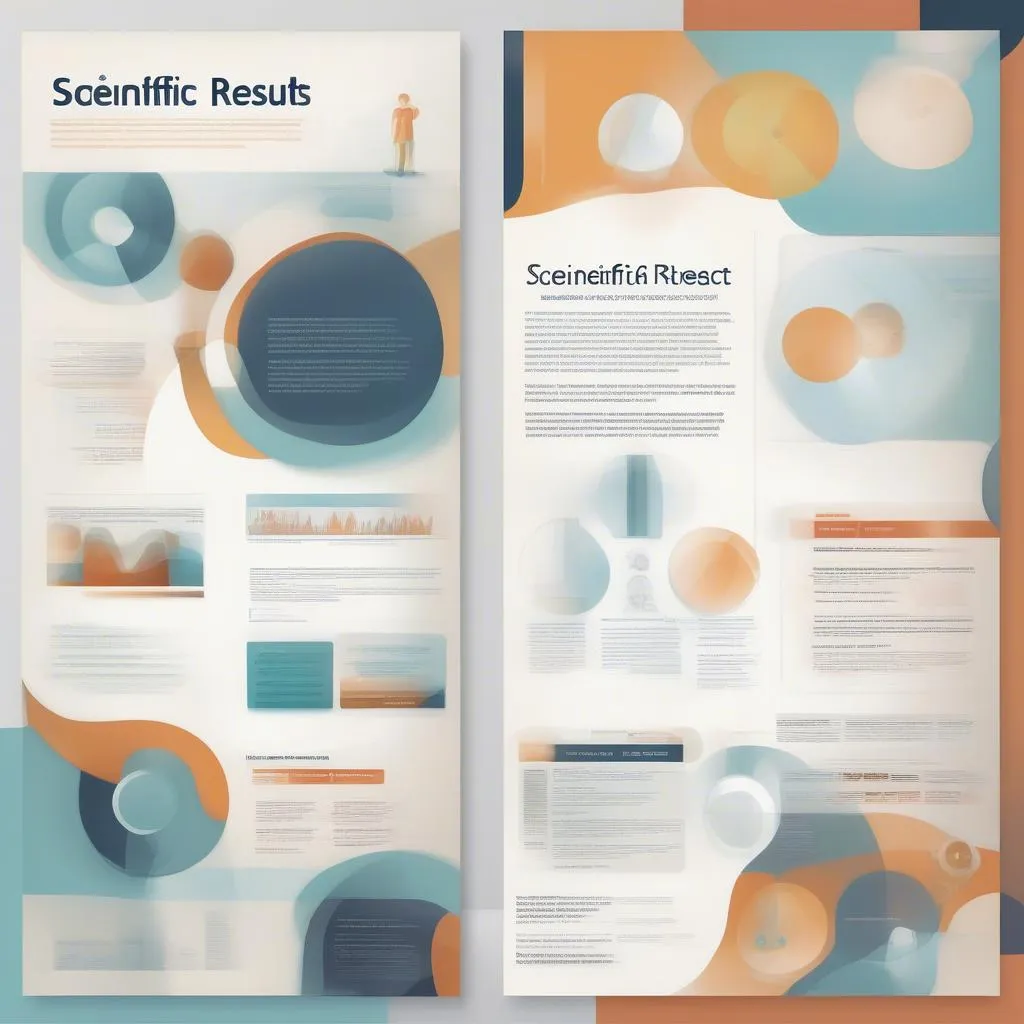“Necessity is the mother of invention,” this proverb holds true in all situations, especially when you need to create a poster for scientific research. Not everyone is a design expert, but a poster is the “face” of your research, the place where you present your dedication and effort in the most impactful way.
So, how do you create an impressive scientific research poster that attracts attention and effectively conveys your message? Let “HỌC LÀM” uncover the secrets!
What is a Scientific Research Poster?
A scientific research poster is a visual presentation of your research, commonly used in workshops and scientific conferences. It typically includes key sections such as title, problem introduction, research methods, results, discussion, and conclusion.
Why Do You Need to Create a Scientific Research Poster?
“Worthwhile things take effort.” Creating a scientific research poster may take some time and effort, but it offers many benefits:
- Effective message delivery: Posters help you convey your research message visually, making it easy to understand and attracting the attention of viewers.
- Enhanced presentation skills: Creating a poster requires you to synthesize, analyze, and present information concisely, improving your presentation skills.
- Increased collaboration opportunities: Posters act as a “bridge” connecting you with researchers and experts in your field, creating opportunities for collaboration and knowledge exchange.
How to Create a Scientific Research Poster: A Detailed Guide
Step 1: Brainstorm ideas and choose a topic
- “Where there’s a will, there’s a way.” Clearly define the goal and main message of your poster.
- Choose a topic that aligns with your research, attracts attention, and sparks curiosity in viewers.
- Refer to other scientific research posters for inspiration, but don’t “copy” them verbatim!
Step 2: Develop structure and layout
- “Better safe than sorry.” Design a scientific, readable, and logical layout with key sections such as title, introduction, methods, results, discussion, and conclusion.
- Use graphic design software like Canva, Adobe Illustrator, or PowerPoint to create your poster.
Step 3: Design poster content
- Title: Keep it concise, impactful, and attention-grabbing, clearly reflecting the research topic and piquing viewer curiosity.
- Introduction: Present the research problem, your reasons for choosing this topic, and its significance.
- Methods: Describe your research methods clearly and understandably, including techniques, experimental design, data collection, and analysis methods.
- Results: Present your research results clearly and understandably, using charts, graphs, and illustrative images.
- Discussion: Analyze your research results, compare them with other studies, and highlight the significance and limitations of your research.
- Conclusion: Summarize the conclusions of your research, provide recommendations, and suggest directions for future development.
Step 4: Choose fonts and colors
- Use clear, readable fonts that suit the poster’s theme.
- Choose harmonious colors that create emphasis, reflect the research topic, and attract viewers.
Step 5: Insert images, charts, and tables
- Use relevant images, charts, and tables to illustrate the poster content.
- Choose high-quality images that are clear, easy to understand, and related to the research topic.
- “Starting is always the hardest part,” ensure that images, charts, and tables are arranged scientifically and balanced, without overwhelming viewers.
Step 6: Review and refine
- “Two heads are better than one.” Ask friends, colleagues, or teachers to review and provide feedback on the content, layout, and appearance of your poster.
- Refine your poster until you are satisfied with it.
Tips for Creating Effective Scientific Research Posters
- “A wise bird sings freely,” utilize online support tools to create posters.
- “Persistence pays off,” dedicate time to design your poster to be as impressive as possible.
- “Difficulties test strength,” present your poster confidently and professionally.
- “It’s never too late to learn,” refer to other scientific research posters to learn from experience.
Frequently Asked Questions About Creating Scientific Research Posters:
- “Is there a word limit for scientific research posters?”
- There is no specific word limit, but posters should be concise, easy to understand, and not overly lengthy.
- “What fonts should be used for scientific research posters?”
- Use clear, readable fonts such as Arial, Times New Roman, or Calibri.
- “How to make a scientific research poster attract viewers’ attention?”
- Use relevant images, charts, and tables, choose harmonious colors that create emphasis, and use clear, readable fonts.
Inspirational Story
- “Honesty is the best policy,” the story of scientist Phùng Văn Cường, a renowned expert in Agriculture, once shared his experience on creating scientific research posters: “A scientific research poster is not just a document presenting information, but also a work of art, reflecting the dedication and passion of the researcher. Take the time and effort to create an impressive poster that attracts attention and effectively conveys your message.”
In Conclusion
Are you ready to “go into battle” with your scientific research poster? “HỌC LÀM” hopes this article has provided you with the knowledge and skills needed to create an impressive, engaging, and effective scientific poster. Be bold in expressing yourself, share your knowledge and research results with everyone!
“HỌC LÀM” always accompanies you on your journey to conquer knowledge and success. Contact us for consultation and further support! Phone Number: 0372888889, or visit us at: 335 Nguyen Trai, Thanh Xuan, Hanoi. We have a 24/7 customer care team.


